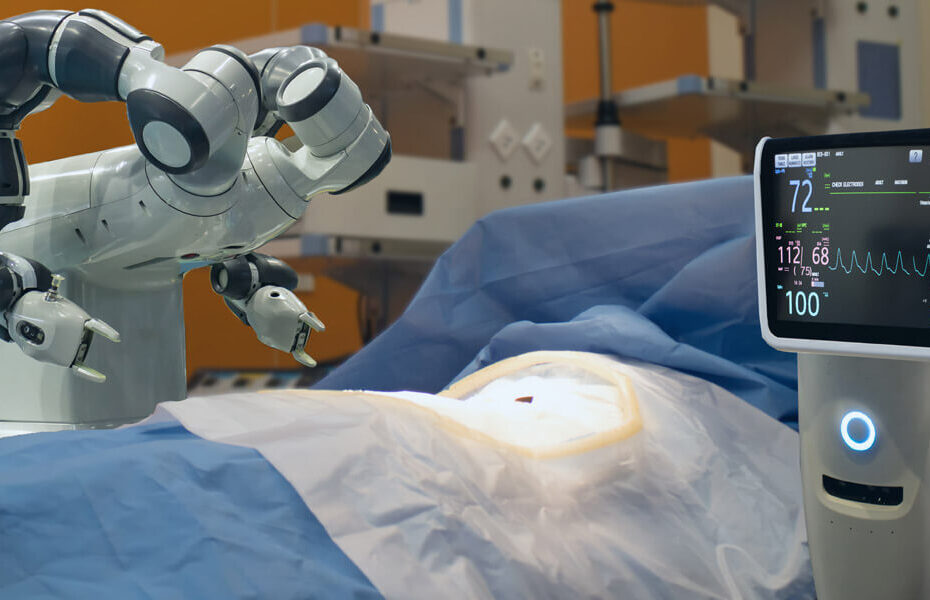Robotic surgery systems have revolutionized the field of surgery, offering increased precision, control, and flexibility to surgeons while minimizing invasiveness and improving patient outcomes. These advanced systems combine cutting-edge technology with surgical expertise to perform complex procedures with enhanced accuracy and efficiency. In this comprehensive guide, we will explore the latest advancements in robotic surgery systems, their applications, benefits, and the future of surgical innovation.
Understanding Robotic Surgery Systems
1. Description:
- Robotic surgery systems are advanced surgical platforms that use robotic arms and specialized instruments to perform minimally invasive procedures.
- These systems are controlled by surgeons who operate from a console, using hand and foot controls to manipulate the robotic arms and instruments.
2. Components:
- Robotic surgery systems consist of several key components, including:
- Robotic arms: These are the mechanical arms that hold the surgical instruments and perform the actual surgical tasks.
- Surgical console: This is where the surgeon sits and controls the robotic arms using hand and foot controls.
- Vision system: This includes high-definition cameras and imaging technology that provide real-time, 3D visualization of the surgical site.
3. Technology:
- Robotic surgery systems use advanced technology, including:
- Computer-assisted navigation: This technology helps guide the surgeon’s movements and provides real-time feedback on the position and orientation of the robotic arms.
- Image processing: High-definition cameras and imaging technology provide detailed, 3D visualization of the surgical site, allowing for greater precision and accuracy.
- Telepresence: Some robotic surgery systems allow for remote surgery, with the surgeon operating the system from a different location than the patient.
Advancements in Robotic Surgery Systems
1. Enhanced Precision:
- Robotic surgery systems offer increased precision and accuracy compared to traditional surgical techniques.
- The robotic arms can make precise, controlled movements with greater dexterity and range of motion, allowing for more precise tissue dissection and suturing.
2. Minimally Invasive:
- Robotic surgery systems enable surgeons to perform minimally invasive procedures with smaller incisions and less tissue damage.
- This results in reduced pain, shorter hospital stays, and faster recovery times for patients.
3. Improved Visualization:
- Robotic surgery systems provide surgeons with enhanced visualization of the surgical site, with high-definition cameras and imaging technology that provide detailed, 3D views.
- This allows for better identification of anatomical structures and more accurate surgical planning and execution.
4. Greater Flexibility:
- Robotic surgery systems offer greater flexibility and maneuverability compared to traditional surgical techniques.
- The robotic arms can access hard-to-reach areas and perform complex procedures with greater ease and precision.
5. Reduced Surgeon Fatigue:
- Robotic surgery systems reduce surgeon fatigue by providing ergonomic controls and support during long surgical procedures.
- The surgeon can operate the system from a comfortable seated position, using hand and foot controls to manipulate the robotic arms and instruments.
Applications of Robotic Surgery Systems
Robotic surgery systems are used in a wide range of surgical specialties and procedures, including:
1. General Surgery:
- Robotic surgery systems are used in general surgery procedures such as:
- Cholecystectomy (gallbladder removal)
- Hernia repair
- Colorectal surgery
2. Urology:
- Robotic surgery systems are used in urology procedures such as:
- Prostatectomy (prostate removal)
- Nephrectomy (kidney removal)
- Pyeloplasty (ureteropelvic junction repair)
3. Gynecology:
- Robotic surgery systems are used in gynecology procedures such as:
- Hysterectomy (uterus removal)
- Myomectomy (fibroid removal)
- Ovarian cystectomy (ovarian cyst removal)
4. Cardiothoracic Surgery:
- Robotic surgery systems are used in cardiothoracic surgery procedures such as:
- Mitral valve repair
- Coronary artery bypass surgery
- Lung resection
5. Orthopedic Surgery:
- Robotic surgery systems are used in orthopedic surgery procedures such as:
- Total knee replacement
- Total hip replacement
- Spinal fusion
Future Trends in Robotic Surgery
1. Miniaturization:
- Future robotic surgery systems are expected to become smaller and more compact, allowing for greater flexibility and maneuverability in tight spaces.
2. Artificial Intelligence (AI):
- AI technology is being integrated into robotic surgery systems to provide real-time guidance and decision support to surgeons during procedures.
- AI algorithms analyze data from imaging studies and patient records to help optimize surgical planning and execution.
3. Haptic Feedback:
- Future robotic surgery systems may incorporate haptic feedback technology, allowing surgeons to feel tactile sensations and forces during procedures.
- This enhances the surgeon’s sense of touch and improves their ability to perform delicate surgical tasks with greater precision.
4. Remote Surgery:
- Advances in telepresence technology are enabling remote surgery, with the surgeon operating the robotic surgery system from a different location than the patient.
- This allows for greater access to surgical expertise and expands the reach of surgical care to underserved areas.
5. Personalized Medicine:
- Future robotic surgery systems may be customized to fit the unique anatomy and biomechanics of each patient, allowing for personalized surgical planning and execution.
- This personalized approach to surgery can improve outcomes and reduce the risk of complications.
Conclusion
Robotic surgery systems have revolutionized the field of surgery, offering increased precision, control, and flexibility to surgeons while minimizing invasiveness and improving patient outcomes. With advancements in technology and surgical techniques, robotic surgery systems continue to push the boundaries of what is possible in modern surgery. By providing enhanced precision, minimally invasive techniques, improved visualization, and greater flexibility, robotic surgery systems are transforming the future of surgery and improving the lives of patients around the world. As technology continues to evolve, the future of surgery looks brighter than ever, with robotic surgery systems playing a central role in shaping the future of surgical innovation and patient care.
